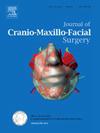Magnetic resonance imaging in dental, oral and maxillofacial trauma: A systematic review
IF 2.1
2区 医学
Q2 DENTISTRY, ORAL SURGERY & MEDICINE
引用次数: 0
Abstract
This systematic review evaluates the current literature on state-of-the-art radiation-free MRI techniques for managing dental, oral, and maxillofacial trauma, comparing their diagnostic performance to conventional X-ray-based imaging. Two reviewers conducted an investigation using the PICOS search strategy across multiple databases, including MEDLINE, EMBASE, BIOSIS, Web of Science, Cochrane Library, LILACS, and BBO Dentistry. Twenty-nine studies were included: 12 on orbital trauma, 10 on condylar, subcondylar, or TMJ trauma, five on mandibular fractures, and one each on temporal bone and dental trauma. MRI was performed at post-traumatic, postoperative, or both stages. Despite variability in scan parameters, field strengths, and coil configurations, the results highlight MRI's growing potential in trauma assessment. CT-like and Black Bone MRI sequences enable simultaneous visualization of hard and soft tissues at trauma sites, providing diagnostic insights comparable to X-ray-based techniques. However, despite their superior soft-tissue assessment, they remain less effective at depicting intricate bony pathoanatomical conditions. This diagnostic approach can improve the long-term benefit-to-risk ratio, particularly for younger, radio-sensitive patients requiring repeated imaging and long-term follow-up. However, a modality- and protocol-oriented approach is essential to balance clinical conditions, radiation exposure, and diagnostic accuracy and efficiency, to ensure optimal patient outcomes in comprehensive trauma management.
磁共振成像在牙科、口腔和颌面外伤中的应用:系统综述。
本系统综述评估了目前关于最先进的无辐射MRI技术用于治疗牙科、口腔和颌面外伤的文献,并将其诊断性能与传统的基于x射线的成像进行了比较。两位审稿人使用PICOS搜索策略对多个数据库进行了调查,包括MEDLINE、EMBASE、BIOSIS、Web of Science、Cochrane Library、LILACS和BBO Dentistry。纳入29项研究:12项关于眶外伤,10项关于髁突、髁下或TMJ外伤,5项关于下颌骨折,各1项关于颞骨和牙齿外伤。MRI分别在创伤后、术后或两个阶段进行。尽管扫描参数、场强和线圈结构存在差异,但结果表明MRI在创伤评估方面的潜力越来越大。CT-like和Black Bone MRI序列能够同时显示创伤部位的硬组织和软组织,提供与基于x射线的技术相当的诊断见解。然而,尽管他们优越的软组织评估,他们仍然不太有效地描绘复杂的骨病理解剖条件。这种诊断方法可以提高长期的获益-风险比,特别是对于需要反复成像和长期随访的年轻、对放射敏感的患者。然而,以模式和方案为导向的方法对于平衡临床条件、辐射暴露、诊断准确性和效率至关重要,以确保在综合创伤管理中获得最佳的患者结果。
本文章由计算机程序翻译,如有差异,请以英文原文为准。
求助全文
约1分钟内获得全文
求助全文
来源期刊
CiteScore
5.20
自引率
22.60%
发文量
117
审稿时长
70 days
期刊介绍:
The Journal of Cranio-Maxillofacial Surgery publishes articles covering all aspects of surgery of the head, face and jaw. Specific topics covered recently have included:
• Distraction osteogenesis
• Synthetic bone substitutes
• Fibroblast growth factors
• Fetal wound healing
• Skull base surgery
• Computer-assisted surgery
• Vascularized bone grafts

 求助内容:
求助内容: 应助结果提醒方式:
应助结果提醒方式:


